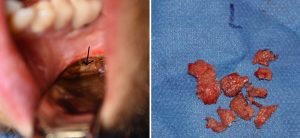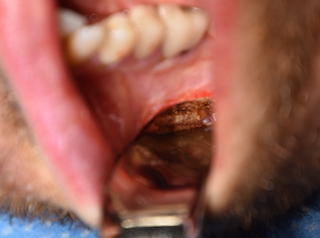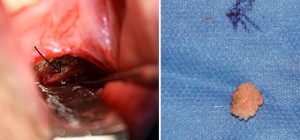Background: The sliding genioplasty is an often used intraoral procedure for various amounts of chin augmentation. It is effective at moving the anterior end of the chin bone for a variety of dimensional changes. The osteotomy line used to down fracture and mobilize the bone is obliquely oriented and extends from below the tooth roots anteriorly through the inferior border of the jawline posteriorly.
When the mobilized chin bone is moved forward there is going to be some bony contour discrepancy along the inferior border. This is large unavoidable, the only question is how significant will it be. This depends on how much forward bone movement is done. Almost always being able to feel these notches, they can sometimes be seen on the outside as well as an indentation along the jawline behind the chin.
Correction of bony step offs from sliding genioplastigs can be done by either augmentation or reduction. Covering the bony step off with an implant material can be effective but one has to be careful to not cause a reverse problem, the creation of a bony bump.


As can occasionally happen the effort to treat a minor aesthetic problem can just create a new one. Such can be the case when trying to fill in or cover over a jawline notch from a sliding genioplasty. The material used should have feather edge and be malleable around the bony defects. It would be most helpful when initially implanted to make sure the tails have a smooth edge. But should the need arise to smooth them out later, this can be done from an intraoral approach.
Case Highlights:
1) Sliding genioplasty procedures can create bony irregularities at the end of the bone cut at the inferior border of the jawline.
2) Correction of sliding genioplasty step offs can be done by an implant overlay.
3) If the implant overlay causes a palpable bulge laterally, this can be reduced by an intraoral shave reduction.
Dr. Barry Eppley
Indianapolis, Indiana




